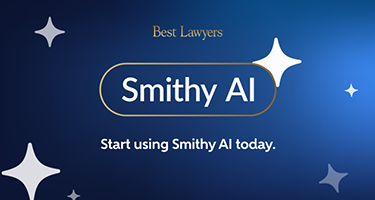Filing for divorce is not as complex or scary as it seems. The process is relatively simple and straightforward, though there may be small variations depending on an individual’s state or county.
The divorce process begins with the filing of a petition for divorce. The spouse filing for divorce is regarded as the “petitioner” or “plaintiff,” while the other spouse is regarded as the “respondent” or “defendant.”
Information regarding both spouses, including residency, date and length of marriage and current living situation, are required to be in the petition. Likewise, information about any minor children and circumstances regarding their custody and guardianship is also required.
Grounds or a reason for the divorce must also be alleged in the divorce petition. Failure to do so could be fatal to the petition and may result in dismissal.
Once complete, the petition must be filed with the court, usually in the county in which one or both of the spouses live. There will be a filing fee for doing so, which also varies by state and sometimes by county.
Upon service of the petition on the responding spouse, the divorce proceeding officially begins.
To avoid default, in most states, the responding spouse must file an answer to the divorce petition. The answer will set forth what the responding spouse agrees with or denies in the petition.
Additional matters for consideration by the court may also be included in the responding spouse’s answer to the divorce petition, which often will include a counterclaim or counter-petition.
Either spouse may request temporary orders involving child custody, child or spousal support, use of property such as the marital residence, payment of debts and even interim attorneys’ fees at any time during the pendency of the divorce.
Types of Divorce
A spouse seeking a divorce must allege grounds for the divorce, and each state’s statutes set forth the grounds upon which a divorce may be granted.
As of 2023, most states recognize both fault and no-fault-based grounds for divorce. Seventeen states and the District of Columbia, however, are purely no-fault divorce states.
Fault-based grounds require the divorce-seeking spouse to prove that the other spouse is at fault for the demise of the marriage, such as by reason of adultery, cruel treatment or other extreme misconduct. But the most common grounds for divorce are no-fault based, meaning that the divorce-seeking spouse must only allege the marriage is irretrievably broken, with no requirement to explain why or allege wrongdoing.
A marriage is deemed irretrievably broken if the spouses are no longer compatible with one another, and there is no hope of repairing the marital relationship between them. The terms “irretrievably broken” and “irreconcilable differences” are often used interchangeably.
There are many benefits to filing a no-fault divorce, not the least of which are the reduction in time and costs in addition to emotional stress to the parties and any minor children involved. No-fault divorce typically prevents couples from airing out personal and intimate details of their marital issues in court and helps to maintain a higher level of privacy during the divorce process.
Finally, by eliminating the need to prove wrongdoing, no-fault divorce has the potential to decrease the level of conflict in the litigation and enhance the prospects for a more amicable resolution, which is particularly beneficial to maintaining a healthy and effective co-parenting relationship for couples with minor children.
Regardless of whether a spouse filing for divorce asserts fault or no-fault-based grounds, the eligibility to divorce requires that at least one spouse meets the residency requirements of the state in which the divorce will be filed, with few exceptions.
A handful of states require that only one of the spouses reside in the state on the filing date. In most states, however, at least one spouse must have lived there for some continuous time period before the divorce papers are filed. The most typical residency requirement is six months, but it can range from six weeks to two years.
The End of No-Fault Divorce?
Statements from the campaign trail of President-elect Donald Trump and his administration have some legal professionals concerned about the prospect of eliminating no-fault divorce in the future.
Marcia A. Zug, a family law professor at the University of South Carolina, believes this not-so-distant future signals that attempts to put a legislative end to no-fault divorce are “absolutely on the table.”
“This is easier to get rid of than abortion rights. Obviously, the biggest indication is if state legislatures start proposing it. Five years ago, no one was,” said Zug, the Washington Post reported.
A series of organizations affiliated with Project 2025, a conservative political initiative first published in April 2022, including the Center for Family and Human Rights and the Family Research Council, have both publicly denounced no-fault divorce, calling for its immediate disposal.
Vice President-elect JD Vance also said at a 2021 California private school event that U.S. citizens “divorce too easily.”
Louisiana and Oklahoma Kick-Start Repeal Efforts
While no state has fully commenced a legislative rollout to end no-fault divorce, several state judiciaries, including Louisiana and Oklahoma, possess a GOP majority and have made many public considerations.
The Louisiana Republican State Central Committee, which posed a resolution to eliminate no-fault divorce last year, recently became the first state to enact a “covenant marriage” law, a religiously rooted contract that makes it more difficult for married couples to get divorced.
In Oklahoma, lawmakers introduced a bill in January to fully eliminate no-fault divorce, a legislative move that has yet to take off.
The Surprising Impact of No-Fault Divorce Laws
No-fault divorce isn’t just a simplified option to dissolve a marriage but, in some cases, a means of survival.
For individuals, specifically women, who are trapped in an unhealthy or abusive relationship and are simply seeking a way out, no-fault divorce laws provide legal remedy to those who need it most.
According to a study conducted by the National Bureau of Economic Research, in states where no-fault divorce was enacted, suicide rates for women radically declined by about 20%.
Additionally, those states also reported significant decreases in cases of “domestic violence committed by, and against, both men and women.”
After the implementation of no-fault divorce laws, a 2004 study conducted by economists Betsey Stevenson and Justin Wolfers revealed a 30% reduction in intimate partner violence affecting both women and men. Additionally, they observed a 10% decrease in the number of women murdered by their partners.
These findings underscore the broader social implications of legislative changes, reflecting how policy can influence personal safety and well-being.
How Much Does a Divorce Typically Cost?
There is no one-size-fits-all price tag for filing a divorce.
Various factors can have a substantial impact on the costs involved, including, but not limited to, whether the divorce is contested or uncontested, whether the couple’s finances are relatively straightforward or more complex, whether the issues involve child custody and whether lawyers are involved.
The state in which the divorce is filed may also influence costs.
As a general rule, if a couple can agree on the terms of their divorce, the divorce will be far less expensive than if highly contested, time-consuming aspects of the divorce, such as child custody, alimony or the sale of real property or business assets, are present.
A “do-it-yourself” uncontested divorce, with no lawyers involved, could cost as little as $500.00, whereas a highly contested divorce with multiple lawyers could cost tens or even hundreds of thousands of dollars.
The average cost of filing divorce in the U.S., according to Forbes magazine, is between $15,000 and $20,000 in 2023.
Prenuptial Agreements
A prenuptial agreement, also referred to as a premarital agreement or antenuptial agreement, is a written agreement entered into by prospective spouses prior to marriage or a civil union.
It outlines the couple’s rights and responsibilities as married spouses. It can provide for how certain assets are treated if the marriage terminates, whether by death or divorce, and includes alimony, property division and business assets.
A prenuptial agreement can thus be beneficial in reducing the uncertainty, risks and complications involved with contentious legal battles over the division of a couple’s assets and liabilities, which can be both costly and emotionally draining.
In the absence of a prenuptial agreement, the couple’s marital and divorce rights will be determined by state laws.
The laws and regulations governing prenuptial agreements vary by state. The American Bar Association notes, however, that “all mandate that such agreements be procedurally and substantively ‘fair.’”
Any findings of fraud, duress, undue influence or other inequitable conduct will generally result in a determination that the prenuptial agreement is unfair and invalidate it. Lack of capacity to contract is also grounds for nullifying a prenuptial agreement.
There are a few items regarding prenuptial agreements that most states agree are necessary to make them valid.
- The agreement must be in writing, must be entered into voluntarily, must not decide custody of children or child support and there must be sufficient financial disclosure.
- The parties should have the opportunity to consult with independent legal counsel.
- There must be sufficient time to prepare and execute the agreement prior to the wedding.
- The agreement should be notarized and/or witnessed.
If you are considering divorce or, alternatively, entering into a prenuptial agreement with your future spouse, it never hurts to familiarize yourself with the legal process ahead of time. Still, it is in your best interest to consult an attorney to fully understand your rights and the legal implications involved.
Natalie Rowland, partner with Taylor English Duma LLP, focuses on high-asset domestic relations including complex divorce and custody law matters. With more than 15 years of experience, she works skillfully to develop strategies to avoid litigation and settle domestic matters through arbitration and mediation.
































